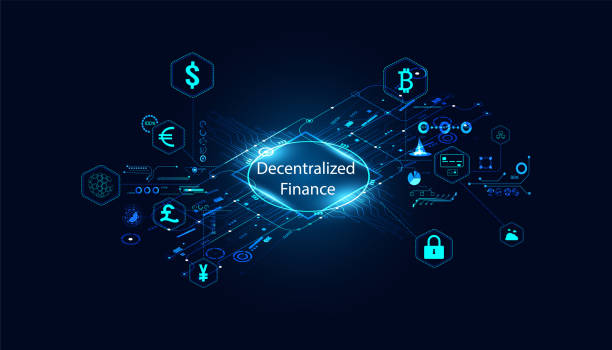What Is Decentralized Finance (DeFi) 2.0?
Don’t invest unless you’re prepared to lose all the money you invest. This is a high-risk investment and you are unlikely to be protected if something goes wrong. Take 2 minutes to learn more

Decentralized Finance 2.0 is a new type of decentralized finance. In this article, we shall get to know everything related to this latest financial innovation and how useful it is in the technology sector.
As DeFi draws closer to concepts of upgrades and redesigned models, it is imperative that we get a good understanding of what this version of Decentralized Finance represents and has brought to its users.
DeFi 2.0: The DeFi Protocols’ Second Generation
DeFi 2.0 is the second iteration of the decentralized finance protocol, as suggested by the name. Understanding the new version will be significantly simpler if you have a solid understanding of decentralized money in general.
DeFi is an ecosystem that houses all decentralized platforms and initiatives created to displace the current financial system with new blockchain-based economic fundamentals.
Decentralized applications and projects must follow tested templates for financial-based agreements to be issued. These protocols grow on the basis of permissionless composability and an open-source development environment, which provide the industry with unique advantages.
Challenges Facing the DeFi 2.0
Decentralized Finance 2.0 has revolutionized DeFi projects, as it tends to solve some of the challenges and restrictions of the earlier version of DeFi. This new version has brought new innovative solutions, such that it holds nothing but progress for the Decentralized Finance sector. It also provides its users with interesting mechanisms that propel them toward financial freedom.
As most DeFi solutions are built on the Ethereum blockchain, scalability and user interface issues have been key hurdles for the early DeFi protocols. Utilizing decentralized products is difficult for users, especially beginners, due to the complexity of the model structures.
A major issue in the DeFi market has been the high gas costs and protracted execution times, which have discouraged many from using DeFi systems. DeFi 2.0, on the other hand, plans to set up the essential infrastructure capable of reducing Ethereum’s scalability problems.
The majority of assets are immobile and unused, which is related to liquidity difficulties and is a noteworthy challenge the DeFi industry is currently facing. There is no denying the reason behind DeFi protocols’ low use ratio:
Some Examples of Decentralized Finance 2.0
DeFi 2.0 toolkits are already being used by some new initiatives to create their protocols, laying the groundwork for the next stage of decentralized finance.
Olympic DAO (OHM): This is a non-centralized reserved currency model consisting of Liquidity pools, bonds, staking, and so on.
AVAX (Avalanche): This is a programmable, fast, and less costly smart contract platform on which Decentralized apps can be created.
Yearn Finance (YFI): This is a lending tracker, yield, and insurance provider on the ETH (Ethereum) blockchain.
Benefits of DeFi 2.0
Advantages of Decentralized Finance 2.0
Numerous functions are promised for the second version of DeFi to make it simple for customers to deploy the DeFi environment. Users can purchase insurance on particular smart contracts with DeFi 2.0 to lessen the risks associated with compromised smart contracts. DeFi 2.0 also protects consumers from the possibility of temporary loss. Finally, the second generation of decentralized finance reduces lending process risks and does away with loan interest payments.
The Dangers of Decentralized Finance 2.0 and How to Prevent Them
DeFi 2.0 promises many benefits, but there are also some problems that the system is prone to. Investment risk comes first. Investing in any financial product has risk; therefore, DeFi 2.0’s decentralized apps aren’t an exception either. DeFi 2.0 may therefore expose consumers to investment risks due to the potential for vulnerabilities in the new generation of smart contracts. Investors are therefore urged to conduct thorough research on any project before investing in it.
Additionally, there are also liquidity dangers associated with Decentralized Finance 2.0. Therefore, it is necessary to note that these dangers can be reduced considerably but not completely eliminated. Although protection against liquidation is built into DeFi 2.0 to protect users against it, users who are planning to become liquidity miners can still be open to losing part of their money. So it is better for proposed liquidity miners to get themselves properly prepared against it.
Conclusion
DeFi 2.0 is worth the wait because it is ready to tackle the risks associated with DeFi 1.0 as the overall tech landscape advances. As a result, it makes the decentralized financial system considerably better and more alluring for people to experiment with. DeFi will therefore become more adaptable to utilize throughout the new phase, pushing blockchain technology closer to general acceptance.




